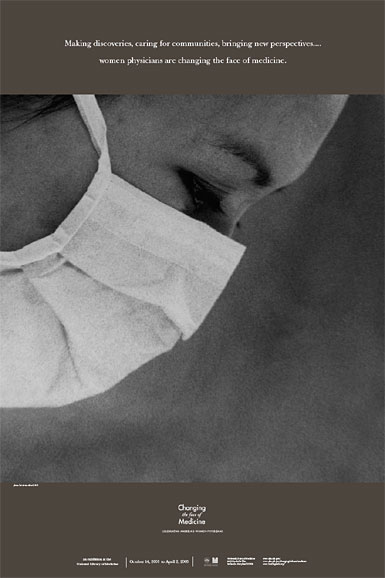Vital Signs
NLM exhibit spotlights women in medicine—and DMS's Lori Alvord
Women in medicine isn't a new topic: female physicians and researchers have been contributing to the betterment of human health for over 150 years. What is new is a major exhibition at the National Library of Medicine (NLM) honoring the lives and achievements of women physicians past and present from all across the U.S.—including, very prominently, DMS surgeon Lori Alvord, M.D.
The exhibition, titled "Changing the Face of Medicine," is a multimedia showcase of artifacts, interactive displays, textiles, and photographs. More than 300 women physicians, living and dead, are included in some way in the exhibit; all of them are profiled in a computerized display at the NLM and on a companion Web site. From that number, 30 or 40 were selected for individual displays in the NLM's galleries. And about a dozen of those displays go beyond a twodimensional presentation and feature artifacts— items representative of that physician's background and approach to medicine. Alvord, the first Navajo woman surgeon in the country, was one of the small number of physicians chosen for this latter treatment. And a dramatic photo of Alvord in a surgical mask was singled out as an icon for the whole show—it's featured on the exhibition poster, reproduced below.

|
|
Alvord was chosen as the "face" of women physicians. |
Among the items in Alvord's display are a hand-woven Navajo blanket; a Navajo sandpainting; and a corn-pollen pouch that goes back at least four generations in her family (and maybe more—Alvord doesn't know for sure how old it is). The items are pertinent to the way Alvord practices medicine, explains her exhibition bio, because the "Stanford-trained surgeon . . . tries to heal, not just fix, her patients by working with families, other practitioners, and constant cultural awareness."
Alvord, who is also associate dean for student and multicultural affairs at DMS, speaks all around the country about cultural awareness in medicine. "It's important to develop relationships with patients and honor their background, history, culture, and beliefs," she says.
It was Alvord's 1999 autobiography, The Scalpel and the Silver Bear (which was excerpted in the Spring 1999 Dartmouth Medicine), that caught the attention of the committee that selected the exhibition's participants. "Dr. Alvord's work demonstrates how women physicians have incorporated their heritage, personal values, or life experiences to bring something new and needed to the profession," says Manon Parry, associate curator for the NLM.
It was almost two years ago that Alvord received a letter from the NLM notifying her of her selection, but she is still pleased by the honor— though humbled at being in the company of the other women in the exhibition, including two former U.S. surgeons general and the former heads of the National Institutes of Health and the Centers for Disease Control. Among the 300-plus participants are also four DMS alumni and two former members of the DMS faculty.
The exhibition can be viewed online at www.nlm.nih.gov/changingthefaceofmedicine. Add /exhibition/changing_caring.html to view Alvord's biography and a few of her artifacts. The exhibition opened at the NLM in October 2003, and after it closes there in April 2005 it will tour the United States.
Laura Jean Whitcomb